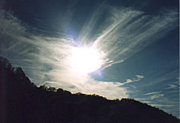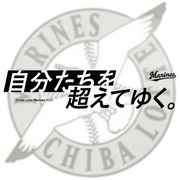いつも東京での「うさと展」会場としてお世話になっているマスミギャラリーの社長から入ってきたメールです。
タイトルは、「福島原子力発電所事故」となっています。
〜〜〜〜〜〜〜〜〜〜〜〜〜〜
福島原子力発電所事故についてTVなど報道からその影響について過剰に恐怖心をあおるニュースが飛び交っていますが慶應大学大学院の工学博士の日比谷教授から送られたメールです。
信頼出来る方からの情報ですので、参考にしていただきたく、転送します。
マスミ東京 横尾靖
○○○○○○○○○○○○○○○
各位
日比谷孟俊です。
When responding to this mail, please use the
following address <t.hibiya@sdm.keio.ac.jp>.
今回の福島原子力発電所の被害と放射線漏洩について、慶應義塾大学大学院システムデザイン・マネジメント研究科の教員有志により、学生(留学生も)向けに、日英2言語で説明文を作りましたので、宜しかったら、ご利用ください。
+++++++++++++++++++++++++++++++++++++++++++++++++++++++
2011.3.17 01:45 作成
・冷却機能がダウンした原子炉の水冷作業が進んでいます。第1発電所の1号炉は既に作業が終了したようです。他の炉についても、苦労しながら進んでいます。
・4号炉の使用済み燃料についても,警視庁機動隊による注水が始まります。
・風による放射性物質の拡散の影響は,数値はシミュレーションによれば,極めて少ないことが明らかになっています。
以下,詳しく説明します。
● 原子炉の構造と安全対策
昨年の8月に当研究科では東京電力柏崎刈羽原子力発電所を見学し,格納容器の中まで見ることができました。
原子炉は燃料棒の入った圧力容器,それを囲む格納容器,さらに,その外側にあるコンクリート製の容器,そして,外側の建物です。
黒鉛を減速剤に使ったチェルノブイリ型原子炉とは異なり,核燃料とこれによって生じる放射線(中性子)を,3重に閉じ込める設計になっています。
● 今回の事態
非常用の電源系統が津波により冠水し,冷却水の供給が止まりましたので,外部のポンプ車などから 海水を注入して温度を下げていましたが,冷却能力は十分ではなく,また,水量も足りませんでした。
そのため,圧力容器内の燃料棒が水面上に露出し,加熱され,水と燃料棒とが反応して,水素が生成し,格納容器の天井に溜まり引火して爆発を起こしましたが,これは,<核の連鎖反応による暴走ではありませんのでチェルノブイリとは状況が異なります>.
TVでショッキングな影像が繰り返し放送されていますが,<水素の化学反応による爆発>です。<安心>してください。
水素爆発により,建屋の天井が吹き飛びました。
人工衛星による画像をみると,コンクリート製の容器が健全なことが分かります。
<安心材料>です。
この容器は,爆弾にも耐える設計と説明されています。とても,頑丈です。
したがって,注水を継続すれば,高レベルの放射能を内部に閉じ込めたまま,温度が下がってゆくでしょう。中性子の減速剤であるホウ酸も使われています。
少し時間がかかるかもしれませんが。
●4号炉使用済み燃料
使用済み燃料には多量の放射性物質が含まれています。これも,冷却水が減っており,一部水面より頭を出しています。緊急性がありますので警視庁機動隊による高圧ポンプによる注水が成功することを期待しています。
●放射線量の単位
TVニュースなどを見ていて分かりにくいのがシーベルト(Sv)という単位だと思います。
シーベルトは放射線の人体への影響を測定する単位です。
報道などで出てくるミリシーベルト毎時mSv/hr) あるいはマイクロシーベルト毎分(μSv/min)のような単位は,放射線を浴びる速度です。
ミリは 1/1,000, マイクロは 1/1,000,000 です。
距離(km) と速度(km/h) の関係と思えば良いでしょう。
ニュースなどでは,これが混同されており,混乱を招いていると思います。
日常生活で浴びる放射線の量としては,東京 NY 往復で200μSv, 胃のレントゲン撮影1回で 600μSv という具合です。
自然界から受ける放射線の量は年間,おおよそ 2,400μSv です。
住む場所によっても 異なりますが.TV などで大きく取上げられるのは,例えば3月15日に第一発電所正門モニタで観測された11,930μSv/hr = 11.93 mSv/hr のような大きな値です。
これは,その時,そこにいれば放射線を浴びる速度です。
仮に1時間いれば,この11.93 mSv を浴びるということになります。
TV 報道でもあるように,この値は変動します。車で言えば,速度が上がったり徐行だったりするのと同じです。
高い値が出るのは,爆発で格納容器にたまっていた放射性物質が一気に放出されたようなことを示しています。その後,下がっています。
その後で下がったということは,壁が崩壊するようなイベントによる急激な上昇が止み,低レベルの水準に戻ったことを意味しており,放射線レベルが上がり続けているわけでは
ありません。これも安心要因です。
● 距離と風
ある地点に放射線を出す物質があり,ここから距離が遠くなると,距離の2乗に反比例して放射線強度は弱くなります。これは光の強度などと同じです。
ですから,距離が遠ければ遠いほど放射線の影響を受けにくいことになります。
今回の場合,風の影響はわずかです。東京まで離れると,殆ど影響が無いと言って間違いないでしょう。
また,放射性物質の拡散はシミュレーションにより予測可能であり,事実上 20 km を超えては短期的な 影響はないとされています。
したがって,東京や神奈川に住んでいる人は、福島から飛散した核物質による影響は無視できるほど小さいと考えてよいでしょう。
放射性物質はわれわれが普段食 べている食塩の中にもカリウム(K-40)として含まれていますので,微量でも放射性物質を取り込むことは,大問題であるとはいえません。
首都圏に居て健康に影響を及ぼすような放射能による障害の可能性は現在のところ無視できるほど小さいので安心してください。
詳細を知りたい人へ:
http://
http://
http://
(English)
● Structure of nuclea reactor and safety:
Keio SDM teachers and students visited N-Power
plant of Tokyo Elctric Power Company at Kashiwazaki-Kariha.
We observed an interior of a container; we stood by the wall of a high pressure vessel containing fuel rods.
N-reactor consists of a hihg-pressure vessel made of thcik stainless steel, a container
made of steel and an outer container made of concrete which absorbs nuetron effectively because of its main chemical composition of calcium carbonate.
Using this structure, nuclear fuel and neutron are triply enclosed.
This stuructur is completely different from that of the Chernobyl reactor, which utilized graphite as a neutron deccelerator. Graphite is easy to burn.
●What happened after earthquake
However, water cooling system stopped, becaue emergency power supply did not work
due to Tsunami attack at Fukushima.
Then, they started cooling using sea water by auxiriary pupm. However, pumping capability was so small and amount of water was not enough.
During this process nuclear fuel cell appeared out of cooling water level in the high-pressure vessel due to its heat and insufficient cooling.
A fuel rod reacted with water, i.e., formation of hydrogen. Hydrogen concentration was high near the ceiling of the building and exploded due to some reason, probably due to
exceeding the explosion limit with an air.
Note that this is NOT NUCLEAR EXPLOSION such that at the Chernobyl N-Power station, but a simple explosion of hydrogen, although this shocking image was broadcaseted on TV repeatedly all over the world.
DO NOT WORRY, this is just an explosio of HYDROGEN!
Fortunately due to this explosion, a ceiling of a building was removed, and a satlite sent us a top-view of an image of a container made of concrete.
It was NOT DAMAGED.
This container was designed so that it can stand with attack of a bumb.
This suggests that by supplyin water continuously, temperature of nuclear fuel can be lowerd with boric acid, which is a deccelerator for neutron.
We have to be patient.
● Used Fuel at the Reacotor No.4
Used fuel contains huge amount of radioactivity. Cooling water decreased and parts of used fuel are supposed to be above the water level; it is dangerous. The riot police of Tokyo Metropolitan Police Department will join fire extinction operation, using a high-pressure pump.
We hope this would be successful.
● Unit of radiation: Sievert
Many people feel difficult to understand unit of radiation, i.e., Sievert (Sv) or
Sievert/hr (Sv/hr).
Sievert is defined as an equivalent dose to a tissue. Rate of dosage is written using milli-Sievert/hr, micro-Sievert/min and so on.
Concept of Sievert and Sivert/hr corresponds to that of km and km/hr.
In TV news, they were confused.
Amount of dosage in our daily life is, e.g., 200 micro-Sivert for a return trip between Tokyo and NY, 600 micro-Sievert for Roentgen inspection of our stomach.
Natural dosage in our daily life is 2400 micro-Sievert a year.
TV reported 11,930 micro-Sievert/hr at the main gate of the First Nuclear Plant on 15 March. This is really high.
This value means amount of dosage for a person who stands there for an hour,
As reported by TV, this values flucuates. Suppose you drive a car at high speed or slowly. This is fluctuation. High radioactivity corresponds to sudden scavenge due explosion.
Value was lower after that. Note that RADIOACTIVITY DOES NOT INCREASE CONTINUOUSLY.
This fact makes us tranquil.
● Distance and wind
Suppose there is a radioactive material at a certain point. Radioactivity degrades in proportioal to square of dsitance.
This is also the case for intensity of light as well.
The effect of wind is so small. Keio University is sufficiently far from that hot spot.
Distribution of radioactive material can be estimated by computor simulation; at the point over 20km from the hot spot, the effect of radioactivity is so small for the short time period.
For the people in Tokyo and Kanagawa, the effect of radioactive materials from the
N-power station of Fukushima is considered so small.
Furthermore, radioactive potassium K40 is contained in table salt. This suggests that taking small amount of radioactive material does not cause a big problem.
Hazard due to radioactivity is negligibly small, as long as we are in the Tokyo and Kanagawa area.
So, please DO NOT WORRY ABOUT RADIOACTIVITY.
For further learning ...
http://
http://
http://
------------------------
Dr.Taketoshi HIBIYA, Professor Keio University
Graduate School of System Design and Management
1-1, Hiyoshi 4-chome, Kohoku-ku, Yokohama 223-8526, Japan
E-mail <t.hibiya@sdm.keio.ac.jp>
http://
Tel +81-45-564-2472 (ext 38020)
Secretary Tel +81-45-564-2460
*****************************************
◆ 慶應義塾大学大学院
>> システムデザイン・マネジメント研究科
>> ------- ここまでが転送メッセージ
---
〜〜〜〜〜〜〜〜〜〜〜〜〜〜〜〜〜〜〜〜〜〜〜
わたしは原発のことなど、ほとんど何もわかりませんので、ここに書かれた文章をどのように受け止めるかは、読まれる人の御判断に委ねます。
ただ、このメールを読み、なんとなく心が膨らんできました。
きっと上手くいく!
現地にいようといまいと、わたしたちは、その痛みを共に経験することで、真剣に新しい時代を開いていける!という希望が大きく育ってきています。
繋がり合うすべてのイノチに感謝
タイトルは、「福島原子力発電所事故」となっています。
〜〜〜〜〜〜〜〜〜〜〜〜〜〜
福島原子力発電所事故についてTVなど報道からその影響について過剰に恐怖心をあおるニュースが飛び交っていますが慶應大学大学院の工学博士の日比谷教授から送られたメールです。
信頼出来る方からの情報ですので、参考にしていただきたく、転送します。
マスミ東京 横尾靖
○○○○○○○○○○○○○○○
各位
日比谷孟俊です。
When responding to this mail, please use the
following address <t.hibiya@sdm.keio.ac.jp>.
今回の福島原子力発電所の被害と放射線漏洩について、慶應義塾大学大学院システムデザイン・マネジメント研究科の教員有志により、学生(留学生も)向けに、日英2言語で説明文を作りましたので、宜しかったら、ご利用ください。
+++++++++++++++++++++++++++++++++++++++++++++++++++++++
2011.3.17 01:45 作成
・冷却機能がダウンした原子炉の水冷作業が進んでいます。第1発電所の1号炉は既に作業が終了したようです。他の炉についても、苦労しながら進んでいます。
・4号炉の使用済み燃料についても,警視庁機動隊による注水が始まります。
・風による放射性物質の拡散の影響は,数値はシミュレーションによれば,極めて少ないことが明らかになっています。
以下,詳しく説明します。
● 原子炉の構造と安全対策
昨年の8月に当研究科では東京電力柏崎刈羽原子力発電所を見学し,格納容器の中まで見ることができました。
原子炉は燃料棒の入った圧力容器,それを囲む格納容器,さらに,その外側にあるコンクリート製の容器,そして,外側の建物です。
黒鉛を減速剤に使ったチェルノブイリ型原子炉とは異なり,核燃料とこれによって生じる放射線(中性子)を,3重に閉じ込める設計になっています。
● 今回の事態
非常用の電源系統が津波により冠水し,冷却水の供給が止まりましたので,外部のポンプ車などから 海水を注入して温度を下げていましたが,冷却能力は十分ではなく,また,水量も足りませんでした。
そのため,圧力容器内の燃料棒が水面上に露出し,加熱され,水と燃料棒とが反応して,水素が生成し,格納容器の天井に溜まり引火して爆発を起こしましたが,これは,<核の連鎖反応による暴走ではありませんのでチェルノブイリとは状況が異なります>.
TVでショッキングな影像が繰り返し放送されていますが,<水素の化学反応による爆発>です。<安心>してください。
水素爆発により,建屋の天井が吹き飛びました。
人工衛星による画像をみると,コンクリート製の容器が健全なことが分かります。
<安心材料>です。
この容器は,爆弾にも耐える設計と説明されています。とても,頑丈です。
したがって,注水を継続すれば,高レベルの放射能を内部に閉じ込めたまま,温度が下がってゆくでしょう。中性子の減速剤であるホウ酸も使われています。
少し時間がかかるかもしれませんが。
●4号炉使用済み燃料
使用済み燃料には多量の放射性物質が含まれています。これも,冷却水が減っており,一部水面より頭を出しています。緊急性がありますので警視庁機動隊による高圧ポンプによる注水が成功することを期待しています。
●放射線量の単位
TVニュースなどを見ていて分かりにくいのがシーベルト(Sv)という単位だと思います。
シーベルトは放射線の人体への影響を測定する単位です。
報道などで出てくるミリシーベルト毎時mSv/hr) あるいはマイクロシーベルト毎分(μSv/min)のような単位は,放射線を浴びる速度です。
ミリは 1/1,000, マイクロは 1/1,000,000 です。
距離(km) と速度(km/h) の関係と思えば良いでしょう。
ニュースなどでは,これが混同されており,混乱を招いていると思います。
日常生活で浴びる放射線の量としては,東京 NY 往復で200μSv, 胃のレントゲン撮影1回で 600μSv という具合です。
自然界から受ける放射線の量は年間,おおよそ 2,400μSv です。
住む場所によっても 異なりますが.TV などで大きく取上げられるのは,例えば3月15日に第一発電所正門モニタで観測された11,930μSv/hr = 11.93 mSv/hr のような大きな値です。
これは,その時,そこにいれば放射線を浴びる速度です。
仮に1時間いれば,この11.93 mSv を浴びるということになります。
TV 報道でもあるように,この値は変動します。車で言えば,速度が上がったり徐行だったりするのと同じです。
高い値が出るのは,爆発で格納容器にたまっていた放射性物質が一気に放出されたようなことを示しています。その後,下がっています。
その後で下がったということは,壁が崩壊するようなイベントによる急激な上昇が止み,低レベルの水準に戻ったことを意味しており,放射線レベルが上がり続けているわけでは
ありません。これも安心要因です。
● 距離と風
ある地点に放射線を出す物質があり,ここから距離が遠くなると,距離の2乗に反比例して放射線強度は弱くなります。これは光の強度などと同じです。
ですから,距離が遠ければ遠いほど放射線の影響を受けにくいことになります。
今回の場合,風の影響はわずかです。東京まで離れると,殆ど影響が無いと言って間違いないでしょう。
また,放射性物質の拡散はシミュレーションにより予測可能であり,事実上 20 km を超えては短期的な 影響はないとされています。
したがって,東京や神奈川に住んでいる人は、福島から飛散した核物質による影響は無視できるほど小さいと考えてよいでしょう。
放射性物質はわれわれが普段食 べている食塩の中にもカリウム(K-40)として含まれていますので,微量でも放射性物質を取り込むことは,大問題であるとはいえません。
首都圏に居て健康に影響を及ぼすような放射能による障害の可能性は現在のところ無視できるほど小さいので安心してください。
詳細を知りたい人へ:
http://
http://
http://
(English)
● Structure of nuclea reactor and safety:
Keio SDM teachers and students visited N-Power
plant of Tokyo Elctric Power Company at Kashiwazaki-Kariha.
We observed an interior of a container; we stood by the wall of a high pressure vessel containing fuel rods.
N-reactor consists of a hihg-pressure vessel made of thcik stainless steel, a container
made of steel and an outer container made of concrete which absorbs nuetron effectively because of its main chemical composition of calcium carbonate.
Using this structure, nuclear fuel and neutron are triply enclosed.
This stuructur is completely different from that of the Chernobyl reactor, which utilized graphite as a neutron deccelerator. Graphite is easy to burn.
●What happened after earthquake
However, water cooling system stopped, becaue emergency power supply did not work
due to Tsunami attack at Fukushima.
Then, they started cooling using sea water by auxiriary pupm. However, pumping capability was so small and amount of water was not enough.
During this process nuclear fuel cell appeared out of cooling water level in the high-pressure vessel due to its heat and insufficient cooling.
A fuel rod reacted with water, i.e., formation of hydrogen. Hydrogen concentration was high near the ceiling of the building and exploded due to some reason, probably due to
exceeding the explosion limit with an air.
Note that this is NOT NUCLEAR EXPLOSION such that at the Chernobyl N-Power station, but a simple explosion of hydrogen, although this shocking image was broadcaseted on TV repeatedly all over the world.
DO NOT WORRY, this is just an explosio of HYDROGEN!
Fortunately due to this explosion, a ceiling of a building was removed, and a satlite sent us a top-view of an image of a container made of concrete.
It was NOT DAMAGED.
This container was designed so that it can stand with attack of a bumb.
This suggests that by supplyin water continuously, temperature of nuclear fuel can be lowerd with boric acid, which is a deccelerator for neutron.
We have to be patient.
● Used Fuel at the Reacotor No.4
Used fuel contains huge amount of radioactivity. Cooling water decreased and parts of used fuel are supposed to be above the water level; it is dangerous. The riot police of Tokyo Metropolitan Police Department will join fire extinction operation, using a high-pressure pump.
We hope this would be successful.
● Unit of radiation: Sievert
Many people feel difficult to understand unit of radiation, i.e., Sievert (Sv) or
Sievert/hr (Sv/hr).
Sievert is defined as an equivalent dose to a tissue. Rate of dosage is written using milli-Sievert/hr, micro-Sievert/min and so on.
Concept of Sievert and Sivert/hr corresponds to that of km and km/hr.
In TV news, they were confused.
Amount of dosage in our daily life is, e.g., 200 micro-Sivert for a return trip between Tokyo and NY, 600 micro-Sievert for Roentgen inspection of our stomach.
Natural dosage in our daily life is 2400 micro-Sievert a year.
TV reported 11,930 micro-Sievert/hr at the main gate of the First Nuclear Plant on 15 March. This is really high.
This value means amount of dosage for a person who stands there for an hour,
As reported by TV, this values flucuates. Suppose you drive a car at high speed or slowly. This is fluctuation. High radioactivity corresponds to sudden scavenge due explosion.
Value was lower after that. Note that RADIOACTIVITY DOES NOT INCREASE CONTINUOUSLY.
This fact makes us tranquil.
● Distance and wind
Suppose there is a radioactive material at a certain point. Radioactivity degrades in proportioal to square of dsitance.
This is also the case for intensity of light as well.
The effect of wind is so small. Keio University is sufficiently far from that hot spot.
Distribution of radioactive material can be estimated by computor simulation; at the point over 20km from the hot spot, the effect of radioactivity is so small for the short time period.
For the people in Tokyo and Kanagawa, the effect of radioactive materials from the
N-power station of Fukushima is considered so small.
Furthermore, radioactive potassium K40 is contained in table salt. This suggests that taking small amount of radioactive material does not cause a big problem.
Hazard due to radioactivity is negligibly small, as long as we are in the Tokyo and Kanagawa area.
So, please DO NOT WORRY ABOUT RADIOACTIVITY.
For further learning ...
http://
http://
http://
------------------------
Dr.Taketoshi HIBIYA, Professor Keio University
Graduate School of System Design and Management
1-1, Hiyoshi 4-chome, Kohoku-ku, Yokohama 223-8526, Japan
E-mail <t.hibiya@sdm.keio.ac.jp>
http://
Tel +81-45-564-2472 (ext 38020)
Secretary Tel +81-45-564-2460
*****************************************
◆ 慶應義塾大学大学院
>> システムデザイン・マネジメント研究科
>> ------- ここまでが転送メッセージ
---
〜〜〜〜〜〜〜〜〜〜〜〜〜〜〜〜〜〜〜〜〜〜〜
わたしは原発のことなど、ほとんど何もわかりませんので、ここに書かれた文章をどのように受け止めるかは、読まれる人の御判断に委ねます。
ただ、このメールを読み、なんとなく心が膨らんできました。
きっと上手くいく!
現地にいようといまいと、わたしたちは、その痛みを共に経験することで、真剣に新しい時代を開いていける!という希望が大きく育ってきています。
繋がり合うすべてのイノチに感謝
|
|
|
|
|
|
|
|
てんみくろんの会 更新情報
-
最新のアンケート
-
まだ何もありません
-
てんみくろんの会のメンバーはこんなコミュニティにも参加しています
人気コミュニティランキング
- 1位
- 楽天イーグルス
- 31947人
- 2位
- 千葉 ロッテマリーンズ
- 37151人
- 3位
- 一行で笑わせろ!
- 82525人
























